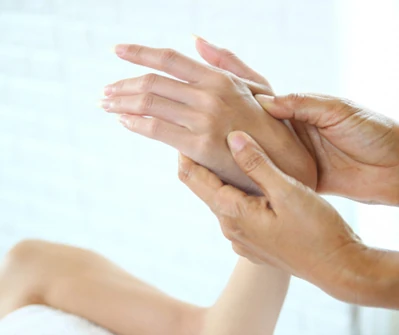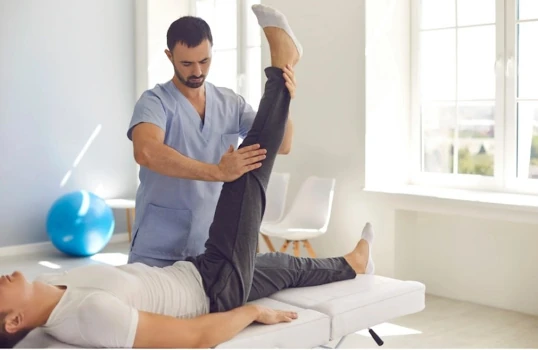Tuina and Bonnie Prudden Myotherapy®
Monday, December 12, 2022, 05:30 PM
Holistic Health Treatments You Should Try
There are many holistic health therapies to explore that enhance your well-being and provide relief from a variety of symptoms. Some treatments that are popular in one part of the world may be overlooked in another, but they could be the exact treatment you're looking for!
In this article, we explore the difference between pressure points and trigger points using two different holistic health practices: tuina and Bonnie Prudden Myotherapy®.
Pressure Points vs. Trigger Points
Pressure points and trigger points are often confused. Although they share the same method of applying pressure using fingers, elbows, or knuckles, there is, in fact, a difference between the two.
Pressure points are commonly used in holistic health treatments like tuina and acupressure to stimulate the proper flow and balance of a person's energy. These are specific points in the body that are common to all people.
Trigger points are unique to each individual, as they are triggered by inflammation or trauma. Bonnie Prudden Myotherapy® is one of many therapies that uses trigger points to relieve muscle tension.

Tuina
What is Tuina?
Tuina (pronounced twee-nah) massage originated in ancient China, belonging to one of the four main branches of traditional Chinese medicine. The term tuina or tui na means to "pinch and pull."
Following the principles of traditional Chinese medicine, tuina massage also promotes proper flow and balance of qi (energy) throughout the body.
The techniques and structural alignment used in tuina massage are similar to anma/amma massage and acupressure. Practitioners apply pressure to specific energy meridians using their fingers to target specific acupoints.
What Are the Benefits of Tuina?
Tuina can be effective to:
- stimulate energy flow and local blood circulation
- relax, release, or tone muscle and fascial condition
- resolve trigger points
- alleviate neck and back strains
- treat digestive, respiratory, and reproductive issues
- manage Carpal Tunnel Syndrome symptoms and Osteoarthritis pain
Tuina massage is used to treat illnesses like Irritable Bowel Syndrome (IBS) and premenstrual syndrome. It is also effective in reducing stress, increasing relaxation, and improving sleep.
What Can I Expect in My Appointment?
Before coming in for your tuina appointment, it's recommended that you are neither too full nor too hungry as the stretches and deep pressure may feel uncomfortable.
Traditionally, tuina massage is practiced on fully clothed clients. Practitioners encourage you to wear comfortable, loose-fitting clothing to allow full, easy access to your body.
Tuina treatments involve several components like direct pressure and massage techniques, such as pushing, pulling, stroking, kneading, and tapping. Tuina massage may differ in pressure and speed depending on your needs.
If you experience any soreness or notice any mild redness or swelling after your tuina treatment, don't be alarmed. Allow your body to rest as it rebalances itself.

Bonnie Prudden Myotherapy®
What is Bonnie Prudden Myotherapy®?
American physical fitness instructor Bonnie Prudden developed Myotherapy in 1976. As an advocate for physical wellness, Prudden believed everyone should be physically fit and live a pain-free life.
In Greek, myo means "muscle" and therapy means "fix or heal." This method of muscle healing was designed to relax muscle spasms, improve circulation, and alleviate pain. This is accomplished by applying pressure to the body for several seconds to defuse trigger points, using fingers, knuckles, and elbows.
Bonnie Prudden Myotherapy® is most effective when combined with specific corrective exercises for the freed muscles. Your therapist will help you work through the exercises needed to ensure proper healing and prevent trigger point reactivation.
What Are the Benefits of Bonnie Prudden Myotherapy®?
Bonnie Prudden Myotherapy® is used to:
- increase strength, flexibility, coordination, and circulation
- reduce stress and anxiety
- improve posture, gait, and sleep patterns
- provide cost-effective recovery treatment
- enhance work and play performance
Bonnie Prudden Myotherapy® can also help treat other common conditions like tennis elbow, piriformis syndrome, hamstring injuries, and tendinitis.
What Can I Expect in My Appointment?
Like most holistic health treatments, Bonnie Prudden Myotherapy® begins with an intake form. The patient and practitioner work together to identify any underlying issues, primarily muscle pain. It is helpful to inform your practitioner of any chronic pain, injuries, or surgeries you have had.
Practitioners encourage clients to wear comfortable, loose-fitting clothing as they lie on the massage table. The practitioner will check the body for active trigger points, which may involve joint and muscle manipulation and test the reflexes.
Once a practitioner has identified trigger points, pressure will be applied using their fingers, elbows, or knuckles for several seconds at a time.
At the end of the session, the practitioner will provide you with a series of specific corrective exercises to free the muscles and prevent trigger point reactivation. Corrective exercises may include stretching or self-massage techniques.
Give It a Try!
Tuina and Bonnie Prudden Myotherapy® both use direct pressure to assist the body's healing process. Although many holistic health treatments use variations on similar techniques, each treatment has the same goal: improving your overall well-being.
Tuina and Bonnie Prudden Myotherapy® are just two of over 60 holistic health practices that the NHPC recognizes. Are you looking for more holistic health treatments to try? Learn about Hawaiian and Japanese Massage Techniques.

